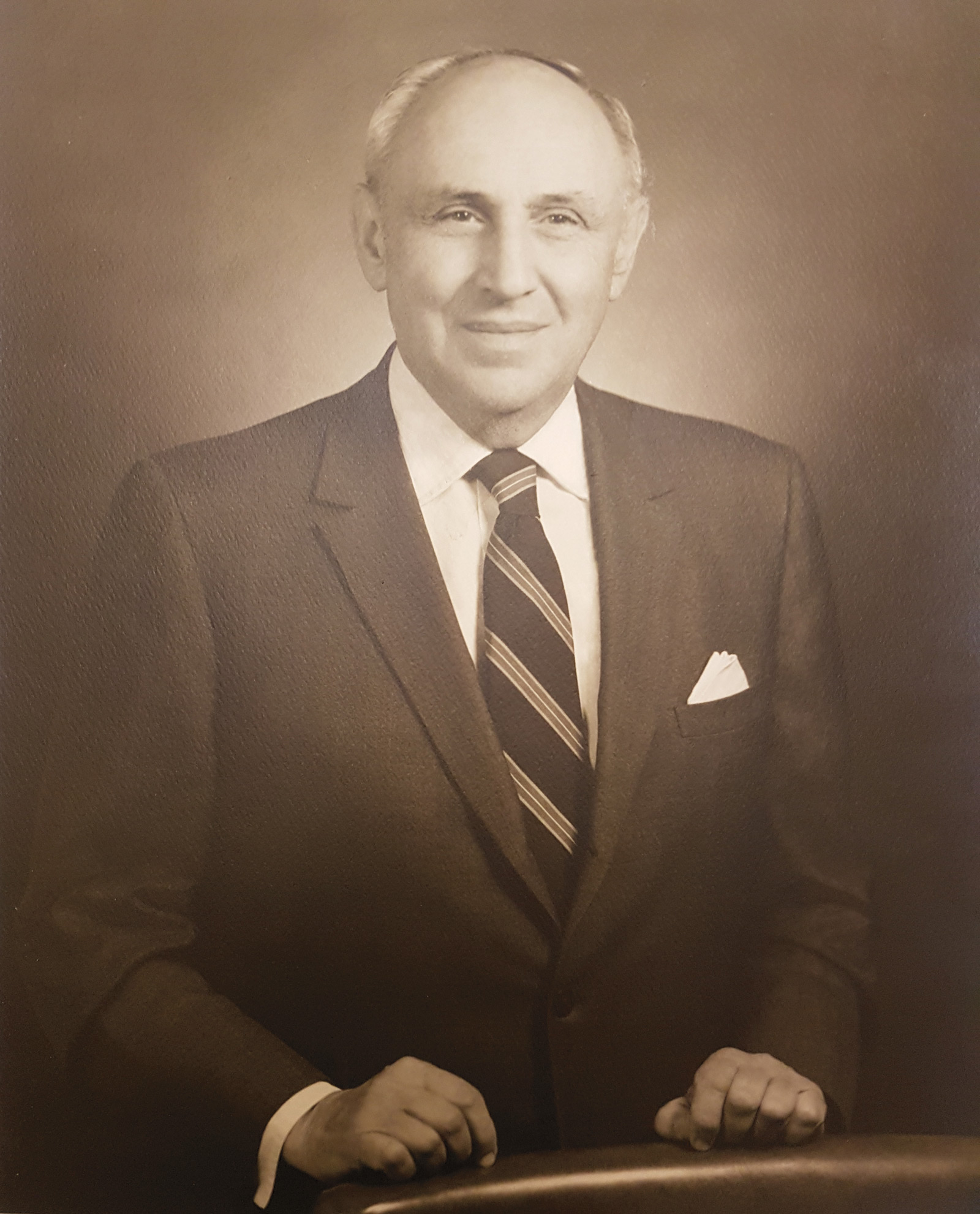
James Meade DeLoreto passed away on Memorial Day, May 29, 2017, at the age of 100. James DeLoreto was a resident of Santa Barbara since 1947 — when his father moved the family here from Connecticut and bought two lemon ranches that they later developed into Loreto Plaza — and during his lifetime was a World War II glider pilot, president of the Santa Barbara County Bar Association, a Santa Barbara city councilmember, Italian vice-consul for the city, and a member of many nonprofit boards.
James was born in Manchester, Connecticut, on September 10, 1916, the son of Emil DeLoreto and Elizabeth Meade DeLoreto. His father was born in Narni, Italy, and came to the U.S. in 1908. He was a butcher who had become dismayed working in Rome. He found out that no matter how hard you work, nepotism trumped good work ethics. He never returned to Italy. James’s mother, Elizabeth, was the American child of Irish immigrants.
James enjoyed living on the farm in Manchester. His father owned two cars: one a Model T and the other a Jeffery that held seven people. He always liked to take rides in them. When he was 9 years old, the family moved to Hartford, where he was brought up.
One of his hobbies was drawing airplanes with dreams of flying one in the future. His most memorable event in school was marching in the baseball parade on Memorial Day when his group took first place.
James graduated from Yale University with a BA in mathematics in 1939 and enrolled in Harvard Law School. His education was interrupted by his military service during World War II. He was first commissioned as a second lieutenant in field artillery in the ROTC. After completing his second year at Harvard Law, during which he secured a private pilot’s license, he was called to active duty for a one-year tour in September 1941. He was assigned to the 7th Field Artillery Observation Battalion at Fort Bragg, North Carolina.
In November 1941, James was sent to Cal Tech in Pasadena, California, for four months of what was called “military meteorology.” He was then assigned to the 3rd Field Artillery Observation Battalion at Fort Sill, Oklahoma, where he became a personnel adjutant. A call came for volunteers to become glider pilots. He applied in the summer of 1942 and was sent in October to Okmulgee, Oklahoma, for primary training. Secondary training took place in La Mesa, Texas, and finally at Lubbock, where he received his glider pilot rating.
Upon graduating, glider pilots were sent to Bowman Field in Louisville, Kentucky, to await overseas shipment. James’s legal background resulted in his becoming an adjutant there, in charge of military courts-martial. After a year at Louisville, he had special training in Alliance, Nebraska, in glider pilot pickups, flying a large 30-seater British Horsa glider.
James arrived in England in late September 1944 to join the 15th Troop Carrier Squadron, which had seen combat duty in North Africa and Sicily. Its C-47 twin-engine Douglas aircraft were used mostly to carry gasoline to General Patton’s army and return the wounded. Glider missions suffered very high casualty rates as they were sitting ducks for artillery.
James’s first scheduled combat role was with a squadron of gliders holding troops. They were to fly at night from England into France behind enemy lines and catch the Germans off guard. But General Patton disobeyed orders, moving his troops against the enemy farther into France. The glider mission was called off because the troops were then beyond flight range.
James’s squadron moved to France in 1945, and after V-E Day, they ended up in Natal, Brazil. On September 30, 1945, he was discharged and returned to complete his final year at Harvard Law School. He retired from the U.S. Air Force Reserve as a lieutenant colonel.
Admitted to the bar in Connecticut in 1946 and in California in 1948, James was a practicing attorney until 2014. He and his parents; his brother, Emil (Theresa); and his sister, Lillis, moved to Santa Barbara in 1947, where they became lemon growers.
James married Frances J. Neilson on February 3, 1951. Together they had four sons, one of whom, William, predeceased him. He is survived by James Jr. (Sally), Edward, and John; five grandchildren, Christopher, Megan, Gregory, Caroline, and Robert James; and four great-grandchildren. His beloved wife Frances (Sissy) died on May 23, 1999.
James DeLoreto was president of the Santa Barbara County Bar Association in 1957 and a Santa Barbara city councilmember from 1957 to 1959, and served as a member of the board of directors of the Santa Barbara Botanic Garden and Santa Barbara Mental Health Association. He also was the Italian vice-consul for the city from the end of 1968 to September 1986 and was pleased to belong to the local Italian-American clubs and attend their events.
James was especially proud of his efforts to help Italians with legal matters such as visa extensions. Some of them became citizens. His position as Italian vice-consul helped him become familiar with street chalk art, and he eventually became involved with Santa Barbara’s I Madonnari event over 30 years ago. Loreto Plaza was an initial major sponsor and has been every year since.
